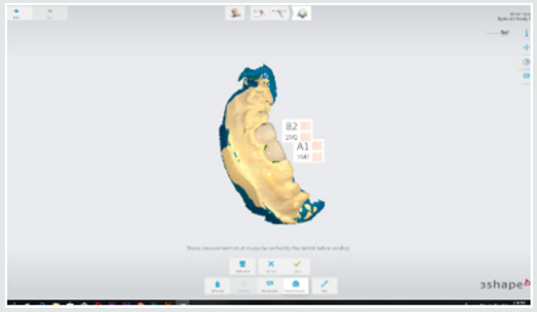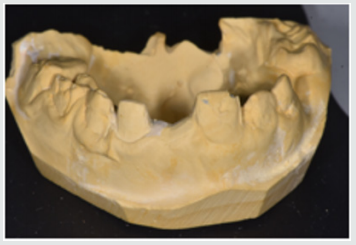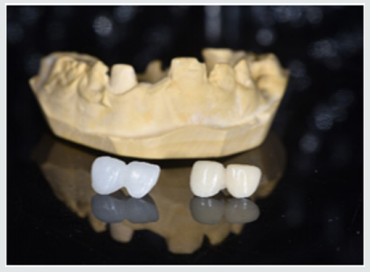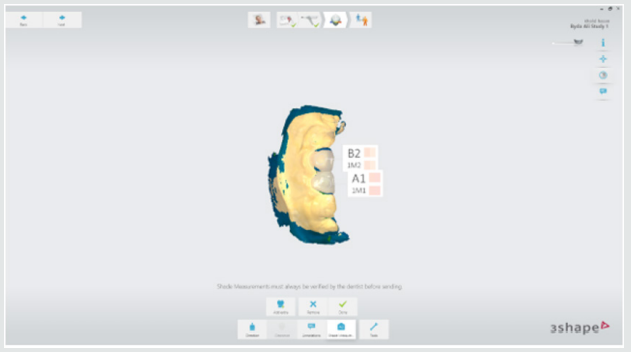Wednesday, October 30, 2019
Lupine Publishers: Intellectual Irrigation Management in Mining Froze...
Lupine Publishers: Intellectual Irrigation Management in Mining Froze...: Lupine Publishers- Environmental and Soil Science Journal Abstract This article examines the current state of soil and ...
Lupine Publishers | Isolation and Characterization of Candida Species from Dental Caries in Deciduous Teeth
Lupine Publishers | Journal of Pediatric Dentistry
Abstract
Keywords: Dental Caries, C Tropicalis
Introduction
Materials and Methods
Results
Discussion
Conclusion
For more Lupine Publishers Open Access Journals Please visit our website:
http://lupinepublishers.us/
For more Open Access Journal on Pediatric Dentistry articles Please Click Here:
https://lupinepublishers.com/pediatric-dentistry-journal/
To Know More About Open Access Publishers Please Click on Lupine Publishers
Follow on Linkedin : https://www.linkedin.com/company/lupinepublishers
Follow on Twitter : https://twitter.com/lupine_online
Saturday, October 26, 2019
Lupine Publishers | Color Changes of Pediatric Dental Bridges
Lupine Publishers | Journal of Pediatric Dentistry
Abstract
Keywords: Color; Changes; CAD/CAM; Bridges; Pediatric; Patient
Introduction
Material and Methods
Figure 3: Demonstrated the color shade measurement of the abutment and pontic portions of the acrylic bridge.


Results
Table 1: Demonstrated the color shade of all samples at the baseline and after one-week and two weeks-time intervals.


Discussion
The results demonstrated that the color changes demonstrated only after two weeks-time intervals immersed in chocolate solution. Even the color shades recorded in the CAD/CAM group considered to be lighter than in manual fabricated group, the discoloration from chocolate solution was probably due to adsorption of color colorant of chocolate solution at the surface of the prostheses.
The CAD/CAM bridges fabricated from blocks of pre-polymerized acrylic resin those had a hydrophobic surface that repels water [12]. As well as, perfect polishing surfaces of the bridges involved in this study revealed the limited discoloration that occurred agreed with other research [13]. As the duration of immersion increased, the color change values of both types of prostheses were recorded by 3Shape scanner system. Thus, the time is considered to be important factor in the staining of the dental prostheses and these results agreed with others [14,15]. Fabrication of dental prostheses with the help of CAD/ CAM technology is related to the advantages of high-density polymers based on highly cross linked polymethylmethacrylate [16]. Those advantages include; good esthetic, low water solubility and absorption, sufficient strength, low toxicity, easy repair with simple fabrication technique [17]. The using of hot cure acrylic for fabrication of dental prostheses even of some advantages but the main disadvantages include porosity with the presence of residual monomer which is a potential allergen, increased finishing time, brittle and uneven thickness [18]. A limitation of this study is that it was an in vitro study and need to be collected with in vivo study to measure the degree of color changes of the prostheses with presenting the effect of saliva and oral hygiene measures. Further clinical and in vitro studies are necessary to evaluate the susceptibility of CAD/CAM and manually acrylic bridges to discoloration by other beverages and nutrients.
Conclusion
For more Lupine Publishers Open Access Journals Please visit our website:
http://lupinepublishers.us/
For more Open Access Journal on Pediatric Dentistry articles Please Click Here:
https://lupinepublishers.com/pediatric-dentistry-journal/
To Know More About Open Access Publishers Please Click on Lupine Publishers
Follow on Linkedin : https://www.linkedin.com/company/lupinepublishers
Follow on Twitter : https://twitter.com/lupine_online
Lupine Publishers | Management of Perinatal and Infant Oral Health
Lupine Publishers | Journal of Pediatric Dentistry
Abstract
Keywords: Perinatal Oral Health; Infant Oral Health; Early Childhood Caries
Introduction
Epidemiology
Anticipatory Guidance According to Caries Risk
New mothers and infants are seen by the medical health care professionals earlier and more often than dentists. It is therefore important that they understand the dynamic multifactorial etiology and risk factors for ECC prevention counselling in pregnant women/caregivers and encouraging a dental home visit at age 1 [23]. In some instances, pregnant women may defer dental care, experience unwillingness of dentists to provide oral care [24-27] or may be unaware of the implications of poor oral health for their pregnancy [28,29]. Hence early identification of mothers with poor oral health/high caries risk and timely delivery of educational information and prevention for themselves and their unborn child can help reduce the incidence of ECC, prevent the need for dental rehabilitation and improve their oral health [30-32]. Caries-risk assessment for infants allows the determination of relative risk for dental disease to prevent disease by identifying and minimizing risk factors (plaque accumulation, diet, lack of topical/systemic fluoride, high frequency of sugar containing medicines) and optimizing protective factors (oral hygiene practices, fluoride and fissure sealants) when the primary dentition starts to erupt [33]. The current trend shows more emphasis on prevention and arrest of the disease processes to manage ECC. This is attributed to the costly and high-risk restorative treatment for ECC since it often entails the use of sedation and/or general anesthesia and a high recurrence rate [34,35]. The chronic disease management approach encompasses engagement of parents to facilitate preventive measures and temporary restorations of the lesion to defer advanced restorative care [36]. An active surveillance methodology entails monitoring caries progression in children and setting up prevention programs for managing incipient carious lesions [37]. An Interim therapeutic restorations (ITR) is a form of temporary tooth restoration in young children until compliance improves and conventional cavity preparation and restoration is possible [38].Oral Health Care Advice to Pregnant or Lactating Mothers
Physicians, dentists, and nurses impart educational advice for mothers during the perinatal period. The preventive advice should include timely brushing with fluoridated toothpastes and use of sugar free gums. The dietary advice should address the quality and quantity of nutritional food along with food cravings that may raise the caries risk. Dental procedures which are considered safe during all trimesters of pregnancy include oral assessment, prophylaxis, local anaesthetic, regular treatment and radiographs with shielding (optimal in second trimester). If, however there is discomfort the elective treatment may be deferred. Breast feeding of infants should be tailored with food over a year or longer but should not be ad libitum. It provides nutritional, developmental and psychological health advantages with a significant decrease in the risk for acute and chronic diseases. It may also transfer maternal medication to infants under 6 months hence use cautiously. It provides awareness of health consequences of tobacco use and exposure to secondhand smoke in children [39-43].Oral Health Care Advice for Infants
An infant should be taken for an initial evaluation to a dental home by the age of one by the pediatricians and the general practitioners. This attains the medical and dental history of both the child and parents, allows oral assessment with a demonstration on age appropriate gum and tooth cleaning, brushing the teeth twice a day with an optimum level of fluoridated toothpaste (smear or rice sized for children under 3), dietary advice (avoid sugar by bottle, sippy cup, sugar between meals, 4-6 ounces of 100% fruit juice per day for 4-6 year old children, systemically administered fluoride (if the drinking water is unfluoridated) and professional fluoride application if caries risk is high, injury prevention advice for facial trauma (objects, cords, pacifiers, car seats, electric cords), advice on teething with excessive salivation areas of intermittent discomfort (oral analgesics, chilled teething rings, over the counter teething gels), management of atypical frenum attachments (frenectomy or frenuloplasty to facilitate breast feeding) and counselling regarding non-nutritive habits such as digit or pacifier sucking, abnormal tongue thrust or bruxism (wean before skeletal dysplasia or malocclusion) [33,44,45].Conclusion
For more Lupine Publishers Open Access Journals Please visit our website:
http://lupinepublishers.us/
For more Open Access Journal on Pediatric Dentistry articles Please Click Here:
https://lupinepublishers.com/pediatric-dentistry-journal/
http://lupinepublishers.us/
For more Open Access Journal on Pediatric Dentistry articles Please Click Here:
https://lupinepublishers.com/pediatric-dentistry-journal/
To Know More About Open Access Publishers Please Click on Lupine Publishers
Follow on Linkedin : https://www.linkedin.com/company/lupinepublishersFollow on Twitter : https://twitter.com/lupine_online
Thursday, October 24, 2019
Lupine Publishers: Lupine Publishers | Future Prospect for Sustainabl...
Lupine Publishers: Lupine Publishers | Future Prospect for Sustainabl...: Lupine Publishers | Journal of Textile and Fashion Designing Abstract The treasure of Major natural fibres belongs to cotton...
Wednesday, October 23, 2019
Lupine Publishers: Lupine Publishers | Some Significant Advances in Y...
Lupine Publishers: Lupine Publishers | Some Significant Advances in Y...: Lupine Publishers | Journal of Textile and Fashion Designing Abstract The article reviews some of the significant researches i...
Saturday, October 12, 2019
Lupine Publishers: Lupine Publishers | Two Trajectorieess a Promise o...
Lupine Publishers: Lupine Publishers | Two Trajectorieess a Promise o...: Lupine Publishers | Journal of Orthopaedics Abstract The working of social and economic institutions, inequality is also a...
Thursday, October 10, 2019
Lupine Publishers: Panduan Penternakan Burung Puyuh (Malay Version)
Lupine Publishers: Panduan Penternakan Burung Puyuh (Malay Version): Lupine Publishers- Environmental and Soil Science Journal Opinion Written by Jabatan Perkhidmatan Veterinar Neg...
Wednesday, October 2, 2019
Lupine Publishers: Activity of the Strain Streptomyces hydrogenans ag...
Lupine Publishers: Activity of the Strain Streptomyces hydrogenans ag...: Lupine Publishers- Environmental and Soil Science Journal Abstract Actinobacterium was isolated from the nature and shown that ...
Tuesday, October 1, 2019
Lupine Publishers: Activity of the Strain Streptomyces hydrogenans ag...
Lupine Publishers: Activity of the Strain Streptomyces hydrogenans ag...: Lupine Publishers- Environmental and Soil Science Journal Abstract Actinobacterium was isolated from the nature and shown that ...
Subscribe to:
Posts (Atom)
980 nm Diode Laser: A Good Choice for the Treatment of Pyogenic Granuloma
Abstract Pyogenic granuloma is a benign non/neo plastic mococutanous lesion . It is a reactional response to constant minor trauma and ca...







